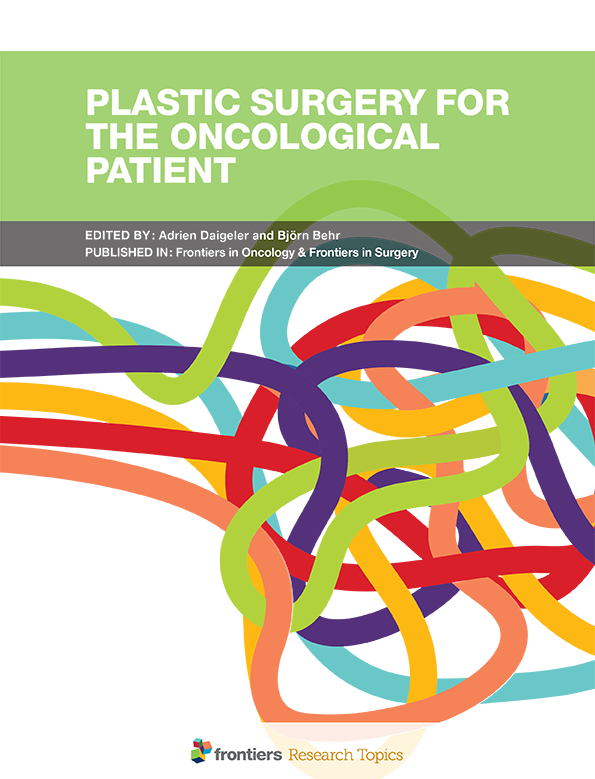Contrast-Enhanced Spectral Mammography-Based Prediction of Non-Sentinel Lymph Node Metastasis and Axillary Tumor Burden in Patients With Breast Cancer
IF 3.5
3区 医学
Q2 ONCOLOGY
引用次数: 1
Abstract
Purpose To establish and evaluate non-invasive models for estimating the risk of non-sentinel lymph node (NSLN) metastasis and axillary tumor burden among breast cancer patients with 1–2 positive sentinel lymph nodes (SLNs). Materials and Methods Breast cancer patients with 1–2 positive SLNs who underwent axillary lymph node dissection (ALND) and contrast-enhanced spectral mammography (CESM) examination were enrolled between 2018 and 2021. CESM-based radiomics and deep learning features of tumors were extracted. The correlation analysis, least absolute shrinkage and selection operator (LASSO), and analysis of variance (ANOVA) were used for further feature selection. Models based on the selected features and clinical risk factors were constructed with multivariate logistic regression. Finally, two radiomics nomograms were proposed for predicting NSLN metastasis and the probability of high axillary tumor burden. Results A total of 182 patients [53.13 years ± 10.03 (standard deviation)] were included. For predicting the NSLN metastasis status, the radiomics nomogram built by 5 selected radiomics features and 3 clinical risk factors including the number of positive SLNs, ratio of positive SLNs, and lymphovascular invasion (LVI), achieved the area under the receiver operating characteristic curve (AUC) of 0.85 [95% confidence interval (CI): 0.71–0.99] in the testing set and 0.82 (95% CI: 0.67–0.97) in the temporal validation cohort. For predicting the high axillary tumor burden, the AUC values of the developed radiomics nomogram are 0.82 (95% CI: 0.66–0.97) in the testing set and 0.77 (95% CI: 0.62–0.93) in the temporal validation cohort. Discussion CESM images contain useful information for predicting NSLN metastasis and axillary tumor burden of breast cancer patients. Radiomics can inspire the potential of CESM images to identify lymph node metastasis and improve predictive performance.基于造影增强的乳腺x线造影预测乳腺癌患者的非前哨淋巴结转移和腋窝肿瘤负荷
目的建立1-2个前哨淋巴结(sln)阳性乳腺癌患者非前哨淋巴结(NSLN)转移风险及腋窝肿瘤负担的无创模型并进行评价。材料与方法2018 - 2021年间,1-2例sln阳性乳腺癌患者行腋窝淋巴结清扫(ALND)和造影增强乳房x线摄影(CESM)检查。提取基于cesm的肿瘤放射组学和深度学习特征。使用相关分析、最小绝对收缩和选择算子(LASSO)和方差分析(ANOVA)进行进一步的特征选择。根据所选特征和临床危险因素构建多因素logistic回归模型。最后,我们提出了两种放射组学图来预测NSLN转移和高腋窝肿瘤负荷的可能性。结果共纳入182例患者[53.13岁±10.03(标准差)]。为预测NSLN转移情况,选择5个放射组学特征和3个临床危险因素(包括sln阳性数、sln阳性比例和淋巴血管侵袭(LVI))构建的放射组学nomogram,测试集的受试者工作特征曲线下面积(AUC)为0.85[95%置信区间(CI): 0.71-0.99],时间验证队列的受试者工作特征曲线下面积(AUC)为0.82 (95% CI: 0.67-0.97)。对于预测高腋窝肿瘤负荷,在测试集中,已开发的放射组学nomogram AUC值为0.82 (95% CI: 0.66-0.97),在时间验证队列中,AUC值为0.77 (95% CI: 0.62-0.93)。CESM图像对预测乳腺癌患者的NSLN转移和腋窝肿瘤负荷具有重要意义。放射组学可以激发CESM图像识别淋巴结转移和提高预测性能的潜力。
本文章由计算机程序翻译,如有差异,请以英文原文为准。
求助全文
约1分钟内获得全文
求助全文
来源期刊

Frontiers in Oncology
Biochemistry, Genetics and Molecular Biology-Cancer Research
CiteScore
6.20
自引率
10.60%
发文量
6641
审稿时长
14 weeks
期刊介绍:
Cancer Imaging and Diagnosis is dedicated to the publication of results from clinical and research studies applied to cancer diagnosis and treatment. The section aims to publish studies from the entire field of cancer imaging: results from routine use of clinical imaging in both radiology and nuclear medicine, results from clinical trials, experimental molecular imaging in humans and small animals, research on new contrast agents in CT, MRI, ultrasound, publication of new technical applications and processing algorithms to improve the standardization of quantitative imaging and image guided interventions for the diagnosis and treatment of cancer.
 求助内容:
求助内容: 应助结果提醒方式:
应助结果提醒方式:


